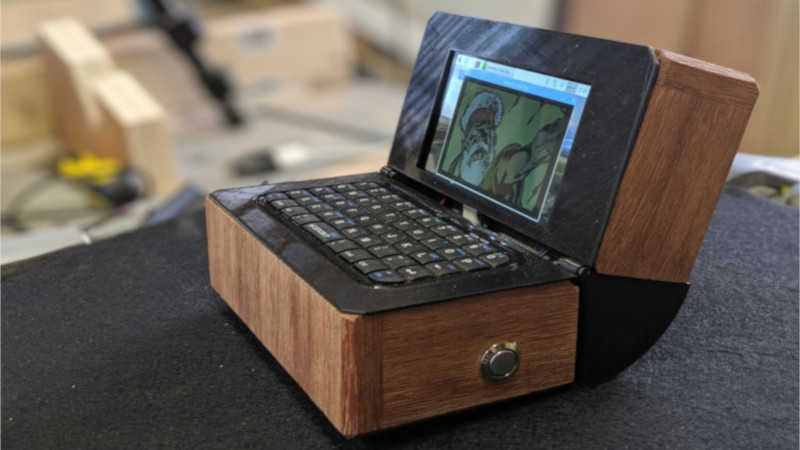Building a handheld Raspberry Pi rig is practically a hacker rite of passage these days. Off-the-shelf parts keep getting better, and we’re now starting to see affordable compact LCD screens with decent resolution become common. [MakeFailRepeat] got his hands on a HyperPixel screen, and decided to whip up a neat project with it.
The result is a charming little laptop, packing a 4″ screen with 800×480 resolution. Input is via multi-touch, as well as an integrated keyboard. The frame of the laptop is wooden, with a 3D printer supplying parts for the hinge mechanism. To round out the aesthetics, the top of the device was given a decorative copper inlay. Power management is via a UPS hat, which allows the device to switch seamlessly between battery and mains power.
A project like this is a great way to learn a wide range of valuable skills. It involves woodworking and 3D design, as well as the basic configuration of a single board computer. They come in all shapes and sizes, like this tiny RetroPie handheld, or this slick laptop build. Video after the break.
















Did he just use a hot glue gun to stick the bottom of the pi to the wooden case? Also this is really quite bulky looking, not sure I’d refer to it as ‘tiny’.
Yes he did.
If you’ve seen a traditional laptop, yes this is tiny.
I would argue that the volume of this isnt much smaller than a laptop, if not the same.
Gluing it into place is a bad idea for many reasons. Could have just used standoffs.
Size wise, I disagree, the area of this looks comparable to an off the shelf laptop, and larger than a netbook.
yeah, sounds like a bad idea unless they use isopropyl to inevitably detach the Pi later on. I usually put Kapton tape between the PCB and the case, and glue the Kapton tape to the case, so that the Pi won’t get damaged by having resistors torn off and stuff.
Might just be a basic fit and function proof of concept. With a bit more detailing it would look rather distinguished.
At this scale, the wood expanding with humidity may not be an issue, but I still find the change in grain direction at the corners jarring.
Well done, I love the idea.